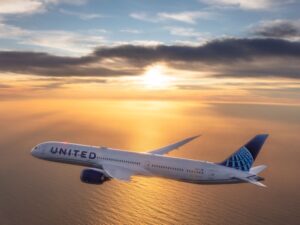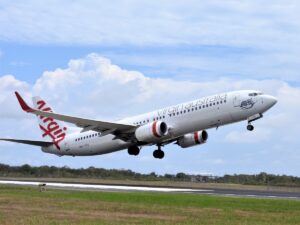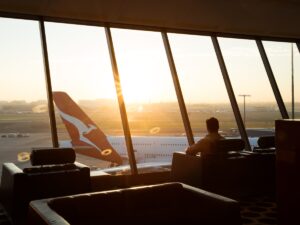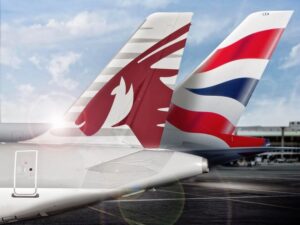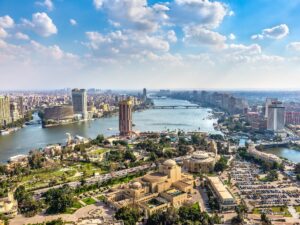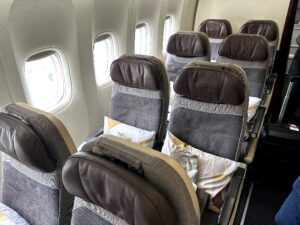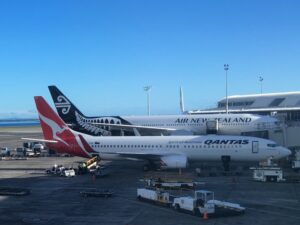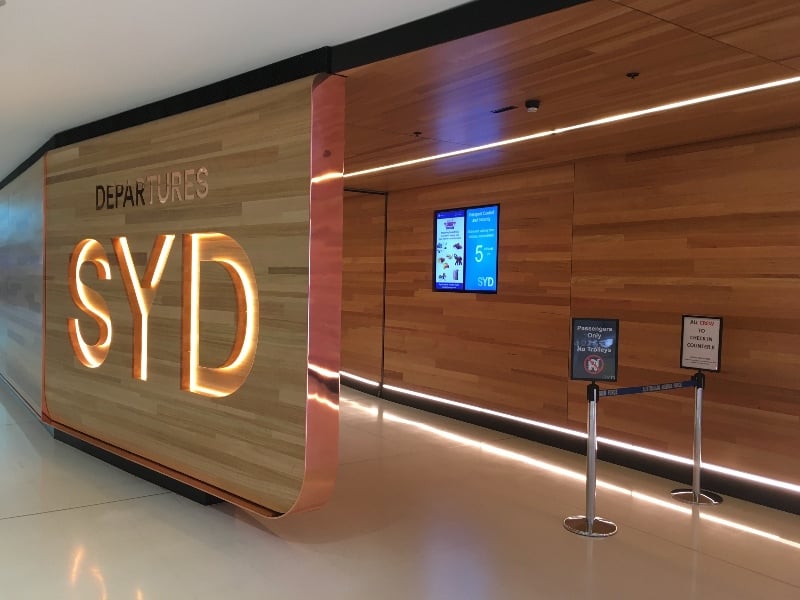
Prime Minister Scott Morrison has announced a “four-phase plan” to reopen Australia’s domestic and international borders following last Friday’s National Cabinet meeting.
Once enough Australians are vaccinated against COVID-19, the country would move from the current “Phase A” into Phase B. This would see vaccinated Australians exempt from domestic border restrictions & lockdowns, and make it easier for vaccinated travellers to return to Australia through higher arrival caps and reduced quarantine requirements.
But under the current plan, arrival caps and the outbound travel ban would not be removed until Phase C. The government has also flagged that quarantine-free travel bubbles with countries like Singapore and Pacific Islands nations – similar to the current arrangement with New Zealand – are unlikely to take effect until Phase C is reached. And pre-flight COVID-19 testing would likely remain in place indefinitely for anyone coming to Australia who is not vaccinated against COVID-19.
Here’s a summary of how international travel restrictions would change under each of the four phases announced on Friday:
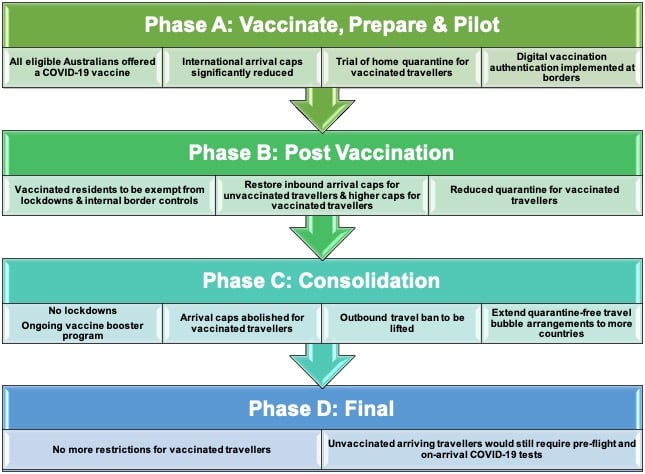
You can read the full list of measures that may be included in each phase of the federal government’s “National Plan to transition Australia’s National COVID-19 Response” on the Prime Minister’s website.
While the plan gives an indication of the Australian government’s current plan to reopen borders, it’s unfortunately not a guarantee and the timeline is vague. The Prime Minister could not say when the country would be able to move into Phase B, other than that it would be based on vaccination rates and “scientific evidence”.
“The post vaccination phase will be entered once we reach a threshold of vaccination, to be determined by the modelling process we’re currently engaged in,” Mr Morrison said.
“It will be based on that scientific evidence that will say to me as Prime Minister, will say to the Chief Medical Officer, Lieutenant General Frewen, the premiers and the health ministers, federal and state, that when you hit that mark, we have a high level of confidence that you can move into this next phase. You don’t lightly move into this next phase, let me be clear,” he added.
One of the only firm and immediate commitments made in last Friday’s announcement was a decision to halve the current caps on the number of returning Australians by 14 July 2021, until at least the end of August – and possibly until next year. The Commonwealth government will add some additional DFAT repatriation flights to Darwin to compensate, but these will not even come close to making up for the reduction in seat capacity on commercial flights.
Either way, with Australia’s vaccine rollout widely criticised as being too slow, it now looks unlikely many international travel restrictions will be relaxed this year. But there is some hope, with the government to run various trials and pilot programs during the current Phase A which would include allowing some vaccinated returning travellers to quarantine at home.
You can join the discussion about when international travel to and from Australia may resume on the Australian Frequent Flyer forum: Predictions of when international flights may resume/bans lifted
